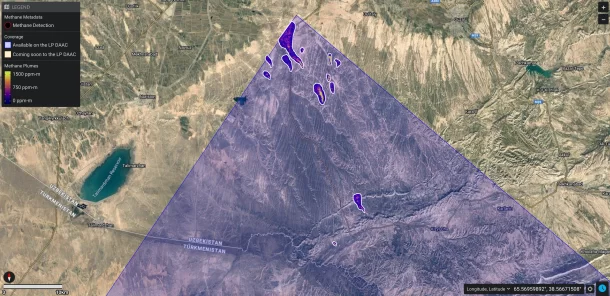
EMIT identified a cluster of 12 methane plumes within a 150-square-mile (400-square-kilometer) area of southern Uzbekistan on Sept. 1, 2022. The instrument captured the cluster within a single scene. (Credit: NASA/JPL-Caltech)
More than a year after first detecting methane plumes from its perch aboard the International Space Station, data from NASA’s Earth Surface Mineral Dust Source Investigation (EMIT) instrument is now being used to identify point-source emissions of greenhouse gases with a proficiency that has surprised even its designers.
EMIT was launched in July 2022 to map 10 key minerals on the surface of the world’s arid regions. Those mineral-related observations, which are already available to researchers and the public, will help improve understanding of how dust that gets lofted into the atmosphere affects climate.
Detecting methane was not part of EMIT’s primary mission, but the instrument’s designers did expect the imaging spectrometer to have the capability. Now, with more than 750 emissions sources identified since August 2022—some small, others in remote locations and others persistent in time—the instrument has more than delivered in that regard, according to a new study published in Science Advances.

